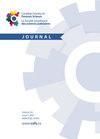Models for predicting height from percutaneous lengths of the ulna and femur in a Ghanaian population
IF 0.5
Q4 MEDICINE, LEGAL
Canadian Society of Forensic Science Journal
Pub Date : 2021-01-02
DOI:10.1080/00085030.2021.1880725
引用次数: 1
Abstract
Abstract This study aimed to develop predictive models from percutaneous femoral (PFL) and ulna (PUL) lengths for estimating height among a living Ghanaian population. This was a cross-sectional study involving 99 adults (males = 52, females = 47) between the ages of 19–31yrs. The height, femoral and ulnar lengths of all participants were measured twice using standard anthropometric methods. Regression predictive equation models were developed based on PFL, PUL, age and the combined PFL + PUL. p < 0.05 was considered statistically significant. Males were significantly taller and had longer PFL and PUL than females (p < 0.05 for all). Correlation between height and PFL, PUL, age and PFL + PUL in the total study population was 0.783, 0.786, 0.234 and 0.875 and their adjusted R2 were 60.9%, 61.4%, 4.5% and 76.4%, respectively. Predicted heights using all models except age, were not significantly different from the measured height (mean difference ≤ 0.0, p > 0.05). However, other population-based models used to predict the height of Ghanaians deviated from the observed height by about 2.1–8.2 cm in males and 1.5–7.6 cm in females. The combined PFL + PUL was more suitable for predictive height followed by PFL and PUL. Height estimating models from PFL and PUL are population-specific and should not be extrapolated to other populations.加纳人群经皮尺骨和股骨长度预测身高的模型
本研究旨在建立经皮股骨(PFL)和尺骨(PUL)长度的预测模型,用于估计加纳人群的身高。这是一项横断面研究,涉及99名年龄在19 - 31岁之间的成年人(男性52人,女性47人)。使用标准人体测量方法测量所有参与者的身高、股骨和尺骨长度两次。基于PFL、PUL、年龄及PFL + PUL联合建立回归预测方程模型。p 0.05)。然而,用于预测加纳人身高的其他基于人口的模型与观察到的身高偏差在男性中约为2.1-8.2厘米,在女性中约为1.5-7.6厘米。PFL + PUL联合预测身高更合适,其次是PFL + PUL。来自PFL和PUL的高度估计模型是特定于人群的,不应该外推到其他人群。
本文章由计算机程序翻译,如有差异,请以英文原文为准。
求助全文
约1分钟内获得全文
求助全文

 求助内容:
求助内容: 应助结果提醒方式:
应助结果提醒方式:


